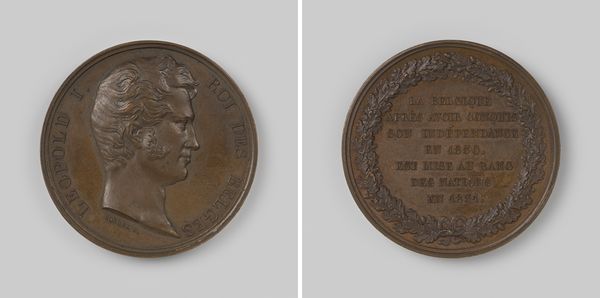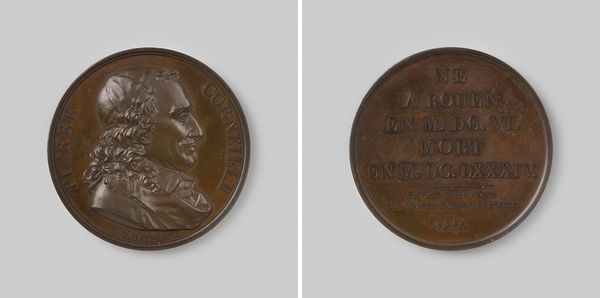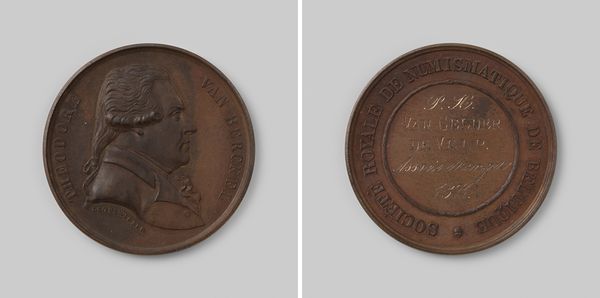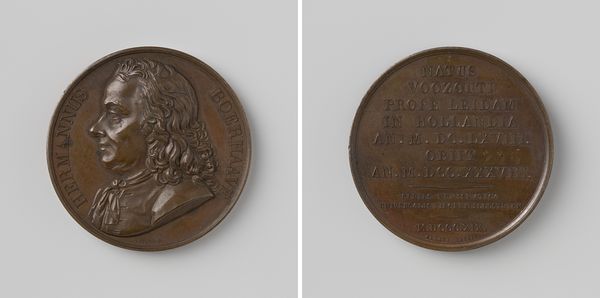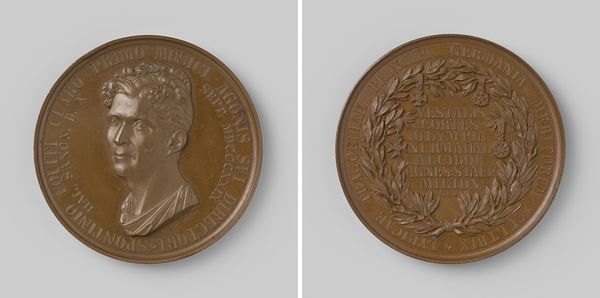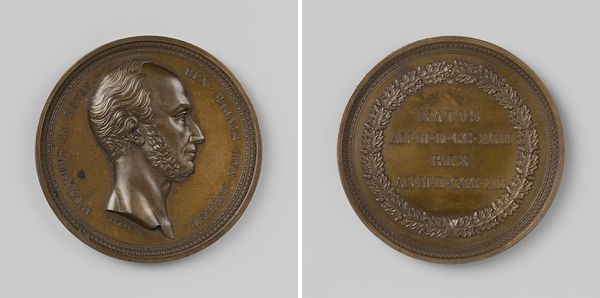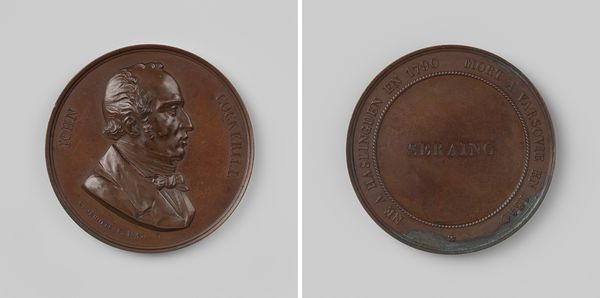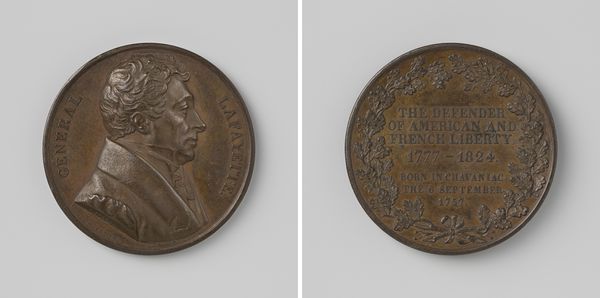
bronze, sculpture
#
portrait
#
neoclacissism
#
sculpture
#
bronze
#
sculpture
Dimensions: diameter 4.1 cm, weight 46.46 gr
Copyright: Rijks Museum: Open Domain
This bronze medal commemorates the death of Friedrich Schiller, and was made by Amédée Pierre Durand in 1819. Bronze is an alloy of copper and tin, often associated with commemorative sculpture and functional hardware. Here, bronze is used for a medallic portrait, with the image in high relief on one side, and an inscription in Latin on the other. Notice how the dense, uniform material allows for fine detail, from the texture of Schiller’s hair to the serifs of the lettering. The medal-making process would have involved the creation of a die, from which multiples could be struck. We can imagine Durand carefully cutting the design into steel, in effect creating a negative impression. This skilled process required both artistic sensibility and technical knowledge of metallurgy. In the nineteenth century, medals like this one were increasingly produced for a mass market. Appreciating how objects are made is essential to understanding their cultural significance, and how the boundaries of art and craft often overlap.
Comments
No comments
Be the first to comment and join the conversation on the ultimate creative platform.


